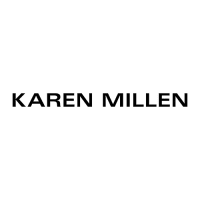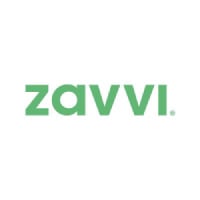Top fund picks for a selection of goals

- From income to starting a growth portfolio, investors have all manner of different fund options available
- What might work well beyond the best-known names?
Your Isa strategy will vary wildly depending on your circumstances and goals. Here we examine funds that could suit different categories of investor.
Investing for children
Wheb Sustainability (GB00B8HPRW47) The lengthy timeframe involved in investing for children can make risk-taking much more palatable.
From small-cap funds to individual shares, bets that might prove off-puttingly volatile in other circumstances have ample time to deliver the goods given the decades-long time horizons involved. The approach allows parents to back themes that seem promising but may require time and patience – the future trend portfolio Scottish Mortgage (SMT), for one, has encountered some horrific swings in value of late but amassed huge returns over long periods. As SMT is already well-known, we highlight another portfolio that, in addition to investment returns, targets a trend that matters significantly to younger people.
Climate change will have a huge impact on future generations, but there is good reason to take issue with so-called environment, society and governance (ESG) funds that simply exclude some of the worst offenders. That brings us to Wheb Sustainability. Rather than, for example, simply avoiding companies with low ESG ratings, this global equity mandate focuses on companies offering solutions when it comes to the shift to a sustainable economy.
It invests across nine themes including resource efficiency, cleaner energy, environmental services, sustainable transport, water management and health. None of its position sizes is huge, but the most prominent holdings at the end of January were in Advanced Drainage Systems (US:WMS), Silicon Laboratories (US:SLAB), which develops electrical components and has a line in ultra-low power devices, and Steris (US:STE), which provides sterilisation services to the likes of biotechnology businesses, among others. The Wheb fund can act as a good diversifier to more conventional global exposures, although like other active funds in this space it can often lag the tech-heavy MSCI World index.
More important, it has an experienced team focusing on a key megatrend. DB
Starting your portfolio
Alliance Trust (ATST) Starting a portfolio should be pretty simple when it comes to investment selection. Many investors will have a small amount of money to invest at first, and buying a fund that can cover lots of ground makes sense while you’re still getting to grips with the ins and outs of markets.
With all that in mind, investors could do much worse than buying a global tracker, at least based on the trends of the past decade. But given that this is already a well-trodden path, and considering the fact that portfolios heavily exposed to the US, tech and growth stocks may well continue to struggle for some time, it’s worth highlighting some of the major alternatives. It’s far from the only option, but Alliance Trust looked pretty durable in a 2022 that was painful for many a global fund.
The trust, which effectively commissions a handful of specialist fund managers to pick their own best stock ideas, has benefited from balancing out its exposure to the growth and value styles. It has a chunk of exposure to the US tech giants, with Alphabet (US:GOOGL), Microsoft (US:MSFT), Visa (US:V) and Amazon (US:AMZN) as its top four holdings at the end of January. But its balance of styles is illustrated by the fact that Exxon Mobil (US:XOM) occupies slot number five, with names such as British American Tobacco (BATS) in its top 20.
As mentioned, Alliance Trust outsources its investments to a handful of specialists, with investors such as Jupiter value manager Ben Whitmore given a remit to pick what they view as the best stocks available in their particular universe. The team running the overall portfolio likes to stress this focus on stock selection over style, sector or country bets, and recent commentary points to a hope that the portfolio should continue to perform well if corporate fundamentals begin to drive share prices rather than other trends. While this might boil down to another tired claim that active management will finally triumph over passives, names such as Alliance Trust and rivals such as F&C Investment Trust (FCIT) do stand out thanks to their greater style diversification and lesser reliance on the US tech majors that drove returns for so many years. DB
Building out your portfolio
HarbourVest Global Private Equity (HVPE)
As your Isa grows, so should both your investment knowledge and the desire to look at the exposures not captured by a conventional global equity fund. There are all manner of pathways available here, from small-cap portfolios to more specific regional allocations. Valid as these options are, it’s also worth considering the opportunities available to a growth investor away from the listed equity universe.
Private equity trusts in particular have generated huge returns in the past decade, in the face of some pretty lukewarm investor sentiment reflected in the large share price discounts to net asset value (NAV) often on show in that sector. Plenty of trusts here have delivered the goods, and we recently highlighted the merits of Oakley Capital Investments (OCI) and its concentrated portfolio of growth investments. To highlight a rival with a more diversified approach, HarbourVest Global Private Equity gets broad exposure to the sector in large part by allocating to many different private equity funds.
The trust has a mixture of exposure to primary funds (newly formed private equity vehicles), secondary funds (where an investor buys into more mature assets from an existing portfolio) and direct investments into companies. The trust’s shares have looked especially unloved recently, trading on a 45 per cent discount to NAV despite its formidable long-term performance. HarbourVest is certainly not immune to chill winds as market sentiment turns: its last half-year results show the NAV dipping in the six months to 31 July 2022, and a combination of weaker sentiment and more expensive borrowing may hinder the sector this year.
But the trust and peers continue to focus on growth opportunities that, over the longer term, could continue to outpace listed stocks. DB
Diversifying and de-risking
Allianz Strategic Bond (GB00B06T9362) Allianz Strategic Bond Fund can invest in various types of fixed income, making it, in effect, a one-stop shop for fixed-income exposure. Lead manager Mike Riddell specifically aims for it to have a low correlation with equities and diversify portfolios that hold the latter or higher-risk corporate bonds.
For example, between June 2016 and the end of November 2022 it had a correlation with the MSCI World global equity index of just 0.16, according to Allianz Global Investors. “While the fund has traded sideways for long periods, thus far it has done an excellent job of capital preservation,” say analysts at FundCalibre. “It has delivered some very high absolute returns and the size of drawdowns has been limited.” Although the fund can invest in various types of bonds, it has been fairly defensive and at the end of January had nearly three-quarters of its assets in triple-A rated debt – bonds that rating agencies consider the least likely to default.
A substantial amount of this was government debt. Currently, its defensive stance stems in part from its managers’ view that markets are underestimating the risk of recession, and that assets such as corporate bonds are barely pricing the risk of recession in. A cautious approach means the fund tends to underperform other strategic bond funds when government bonds are selling off and risk assets are rallying, but do better in the opposite scenario.
For example, the pronounced government bond sell-off between August and October last year was detrimental to the fund’s performance. But the fund’s investment team recently commented: “While Allianz Strategic Bond has behaved similarly to a simple 10-year US Treasury in recent months, this does not mean that it always will. Thanks to our considerable ‘risk off’ hedges, we would expect our portfolio to substantially outperform US Treasuries if the rate rally was accompanied by a sell-off in risk assets, which is the scenario that we feel is most mispriced by markets.” LW
Income
TB Guinness Global Equity Income (GB00BNGFN669)
Although the UK equity market has historically been a good source of dividend income, much of this is generated by a few large companies, meaning if one of them stopped paying out it would create a considerable shortfall. So it makes sense to diversify your sources of equity income globally, not only to reduce risk but also to access many more potentially good dividend payers. A good way to do this is a global equity income fund such as Guinness Global Equity Income, which is well diversified across developed equity markets.
For example, at the end of January, it had 58 per cent of its assets in the US, 7.3 per cent in Switzerland, 5.7 per cent in France, 5.3 per cent in Germany and 3.6 per cent in Denmark. The fund aims to provide a yield above that of its benchmark, the MSCI World Index, and growth over the long term. Its managers look to invest in companies that grow their dividends rather than those with the highest yields, so their starting point is quality rather than yield.
They focus on profitable companies that have generated a persistently high return on capital over the past decade. They like to invest in companies that have, in the short term, fallen out of favour, but previously shown an ability to weather most economic environments over time. The fund’s focus on dividend growers means that its historic yield – 2.4 per cent at the end of January – is lower than that of a number of its sector peers.
But it is better for a fund to make good total returns than generate a high yield while making capital losses. Its managers aim to have the same amount in each holding and the fund is concentrated, with only 35 holdings at the end of January. That increases the risk but also the potential reward from each holding.
Guinness Global Equity Income’s three main sector exposures at the end of January were consumer staples, industrials and IT, which accounted for 26.2, 19.9 and 17.1 per cent of its assets, respectively. Its 10 largest holdings included healthcare company Novo Nordisk (DK: NOVO B), energy solutions company Schneider Electric (FR:SU) and Taiwan Semiconductor Manufacturing (TW: 2330). Although the UK-domiciled version of this fund launched in 2020, the strategy that it employs, which can also be accessed via an offshore fund, has been running since December 2010.
This has a good record of outperforming the MSCI World Index and the Investment Association (IA) Global Equity Income fund sector average return. LW
Reliable growth
Lindsell Train Global Equity (IE00BJSPMJ28) If you’re drawing from your investments because, for example, you are retired, your holdings need to include some reliable growth investments to help preserve their capital value. These could include a global growth fund invested in mainstream developed markets equities such as Lindsell Train Global Equity, which is run by a team that includes highly regarded manager Nick Train.
The fund aims to protect and grow the real value of its capital over the long term and has an outstanding record of doing this. It makes positive returns in most calendar years, and over 10 years cumulatively has outperformed MSCI World Index and the IA Global fund sector average by a significant margin. Lindsell Train Global Equity invests in large-cap companies and, at the end of January, had 35.4 per cent of its assets in the US, 29.3 per cent in the UK and 22.1 per cent in Japan.
It tends not to invest in more volatile areas such as basic materials and oil, and when compared with other global funds and indices it doesn’t have as much in tech stocks, including the major US companies. Instead, the portfolio is heavily invested in consumer companies. Consumer staples accounted for about 40 per cent of its assets at the end of January and examples of holdings include Unilever (ULVR).
It had 8.2 per cent of its assets in consumer discretionary companies such as Prada (HK:1913), and communication services and financials accounted for 17.7 per cent and 13.4 per cent, respectively. The fund’s focus on large, strong and established companies with pricing power means that it is in a good position to outpace inflation. Its managers favour durable, cash-generative franchises with competitive advantages, and rarely change portfolio holdings, meaning that trading costs eat less into returns.
Lindsell Train Global Equity is typically concentrated with between 20 and 35 holdings, and had 25 at the end of January. Although this increases concentration risk it is mitigated by the fact that these are typically large, global liquid companies. The fund’s focus on large, stable companies in less volatile sectors means that in years when global equity markets are falling it typically outperforms, falling less than peers as in 2022 or even making a positive return as in 2018.
However, its defensive profile means that it can lag sharply rising markets, such as in 2021. LW





